- Get link
- X
- Other Apps
9 Stunning Epoxy Floor Ideas for Your Basement Makeover
© 2025 Quality Coatings LLC - All Rights Reserved.
Quality Coatings LLC at 419-551-1064
Serving the Greater Fort Wayne and Tri-State area.
If you're thinking about upgrading your basement, epoxy flooring is a solid choice that combines durability with style. Simple to install and easy to maintain, it can transform your space into a clean, functional area that resists spills and stains. Plus, with various colors and finishes available, you can customize it to match your home’s vibe.
Choosing the Right Epoxy for Your Basement

When it comes to enhancing your basement with an epoxy floor, selecting the right type can make all the difference. The image shows an organized setup with various epoxy color samples and moisture readings. This is a crucial step in your decision-making process.
The moisture levels displayed, like 'Basement 3:56 Moisture' and 'Basement 4:69 Confiance,' indicate important factors to consider. Epoxy floors are sensitive to moisture, so understanding your basement's moisture levels helps you pick a suitable product.
In the image, you can also see different epoxy finishes laid out. Each finish offers unique benefits, like durability or aesthetic appeal. Notably, options like 'Epoxy Resin' and 'Epoxy Bean' give you a taste of what’s available. Choosing one that fits your style and use is key.
Lastly, considering the right color is essential. The samples displayed here allow you to visualize how each shade might look once applied. Think about the overall vibe you want for your basement when making this choice.
Impact of Humidity on Epoxy Floors
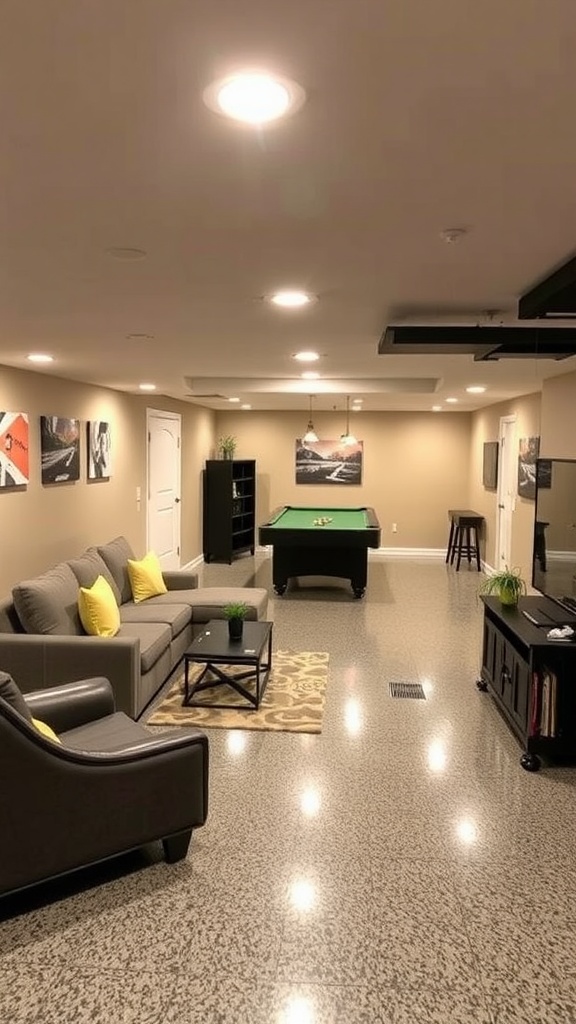
Humidity can play a big role in the performance of epoxy floors in your basement. When the air is damp, it affects how the epoxy cures and adheres.
The image shows a beautifully finished epoxy floor, but it also gives a hint about how moisture can impact flooring. A high moisture level can lead to problems like bubbling or peeling. This is why monitoring humidity is crucial during installation.
Additionally, the graphic highlights various humidity levels and their effects. For instance, excessive moisture can weaken the bond between the epoxy and the substrate beneath it. It’s essential to check these moisture levels before deciding to apply an epoxy finish.
In a basement setting, where humidity is often more pronounced, using a dehumidifier might be a practical solution. Keeping the environment dry not only helps the epoxy cure properly but also extends its life.
Step-by-Step Epoxy Floor Installation
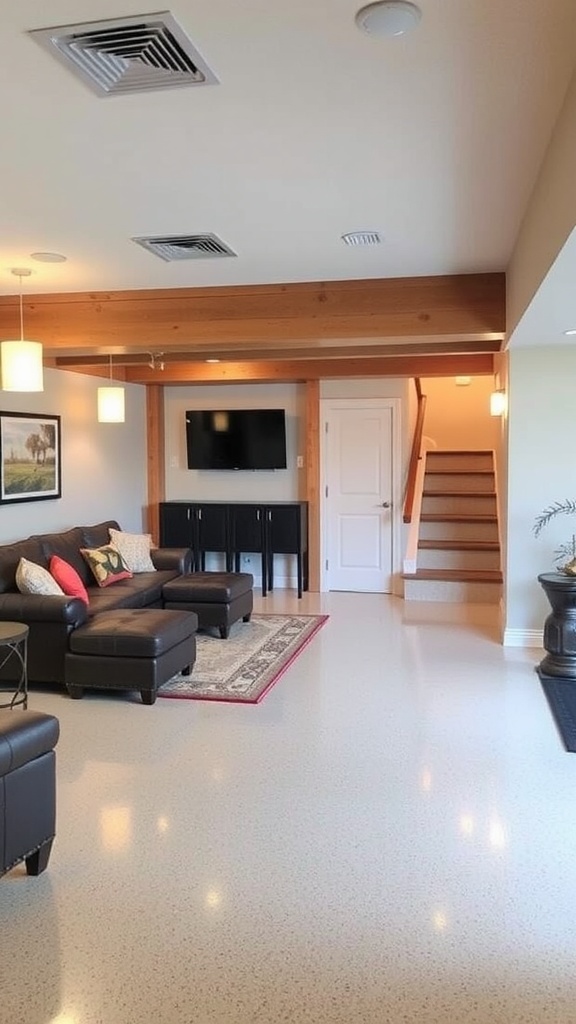
Installing an epoxy floor in your basement can really transform the space. The image shows a clear before-and-after comparison of a basement floor. On the left, we see a worn-out area with an unfinished look, while the right side displays a beautifully finished epoxy floor. This transformation highlights the potential of epoxy flooring.
Before getting started, make sure to gather all your materials. You’ll need an epoxy resin kit, a roller, a squeegee, and some safety gear. Preparation is key! Clean the floor thoroughly to remove any dust, grease, or moisture. This step is crucial for achieving a smooth finish.
Once the space is prepped, mix the epoxy according to the instructions. Make sure to work in small sections so that the material doesn’t set before you can spread it. Use the roller for even coverage, and the squeegee for those tricky areas.
After applying the epoxy, give it time to cure as recommended. The waiting period can be hard, but it’s worth it for the final look. Once fully cured, your basement floor will not only look inviting but also be more durable against wear and tear.
Color and Design Options for Epoxy Basement Floors
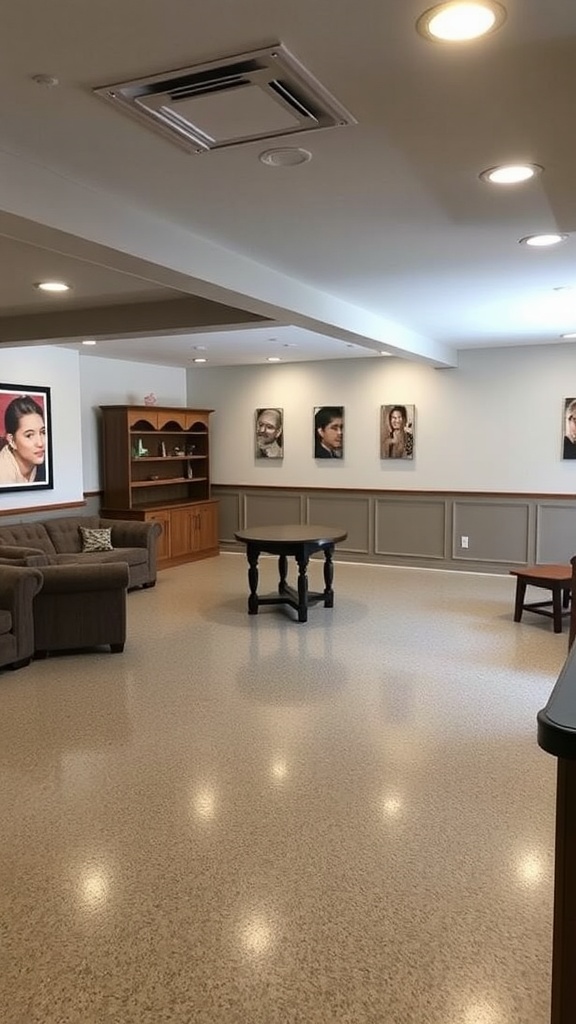
Choosing the right color and design for your epoxy basement floor can completely change the vibe of the space. In the image, you can see a playful combination of colors and patterns that adds character to the basement. The bright pink, green, and blue tones create a cheerful atmosphere, making the basement feel more like a fun gathering spot rather than just a storage area.
One of the benefits of epoxy flooring is its versatility. You can opt for solid colors or playful designs, as shown in the picture. The starfish and swirling patterns not only add visual interest but also express personality. This can be a great way to incorporate themes that resonate with your family or interests.
When selecting colors, consider the overall decor of your basement. Light colors can make a space feel larger and more open, while darker shades can add warmth and coziness. The mix of colors in this image shows how you can create zones within the space, making it functional and inviting at the same time.
Don’t forget about the finish! A glossy finish, as depicted in the image, provides a sleek look and is easy to clean. Matte finishes can offer a more subdued appearance, depending on your preference. Ultimately, your epoxy floor design can reflect your style, making it a fun and practical choice for basements.
Maintaining Your Epoxy Basement Floor

Keeping your epoxy basement floor in top shape is simpler than you might think. Regular maintenance not only keeps it looking fresh but also extends its life. In the image, you can see a person diligently mopping the floor, which is an important part of the upkeep.
First, it's essential to sweep or vacuum the area to remove any dirt and debris. This helps prevent scratches. Then, using a damp mop with a mild cleaning solution, you can easily wipe up stains. The person in the photo is using a mop and a bucket, which is a perfect approach to ensure the floor remains clean.
It's also good to avoid harsh chemicals as they can damage the epoxy finish. Instead, stick to gentle cleaners. Regularly mopping with the right tools will keep your floor shiny and inviting.
Preparing Your Basement for Epoxy Application
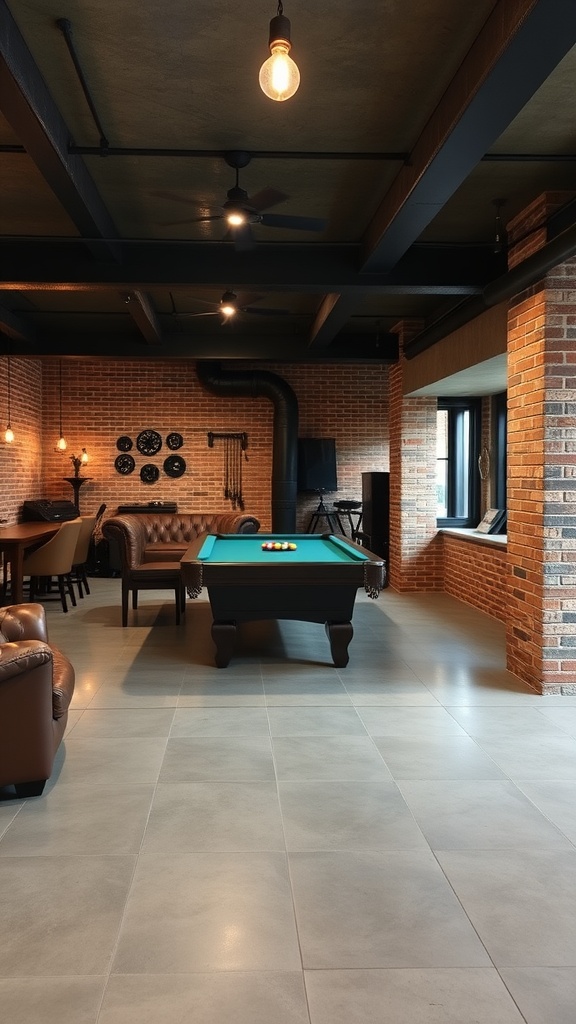
Before diving into the fun part of applying epoxy floor in your basement, it's crucial to prep the space properly. The image shows someone getting ready to restore a basement floor, which is an essential step for a successful epoxy application.
First things first, clear the area. Make sure to remove any furniture, tools, or items from the basement that might get in the way. This not only provides a clear workspace but also helps prevent any damage to your belongings.
Next, inspect the floor for any cracks or imperfections. As seen in the image, using a filler can help address these issues. It's important to fill these gaps to ensure the epoxy adheres properly and lasts longer.
Once the cracks are filled, the next step is cleaning the floor thoroughly. Sweep and mop to remove any dust, dirt, and debris. A clean surface is vital for the epoxy to bond effectively.
After cleaning, let the floor dry completely. Moisture can hinder the epoxy application. Ensure that your basement is dry and well-ventilated before proceeding.
Lastly, consider using painter’s tape to outline the edges or any areas you want to keep clean. This helps in achieving neat lines and prevents any mess during application.
Benefits of Epoxy Flooring in Basements
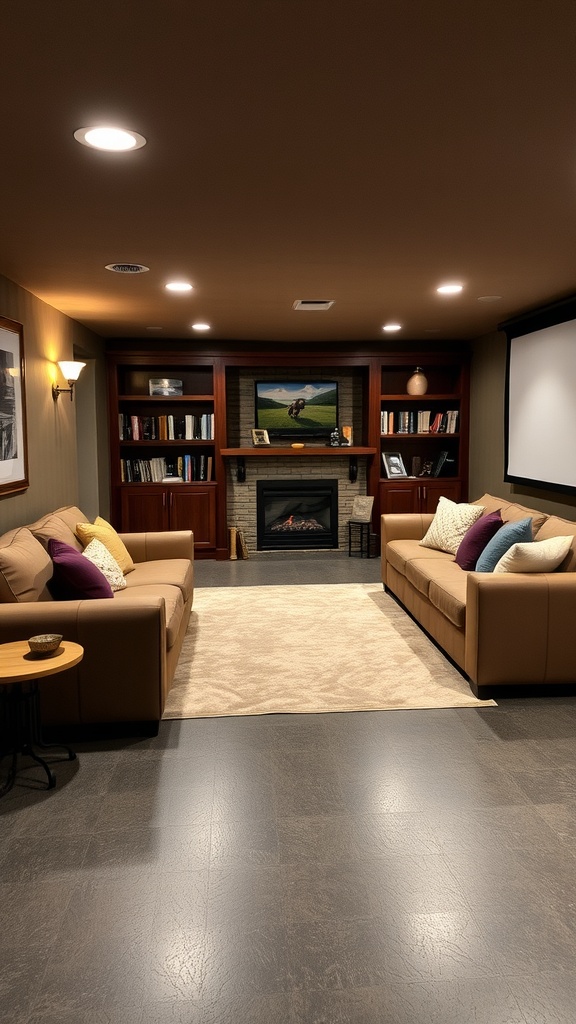
Epoxy flooring is a smart choice for basements, and the image showcases an appealing example. It highlights both the aesthetic and functional aspects of this flooring type. The vibrant colors and unique patterns can really transform a dull space into something inviting.
One of the biggest perks of epoxy flooring is its durability. It can withstand heavy foot traffic and is resistant to stains and spills. If you’re using your basement as a play area or a workspace, this is a major advantage.
Another benefit is the ease of maintenance. A simple wipe with a damp cloth can keep the surface looking clean. Unlike carpets that trap dust and allergens, epoxy floors don’t hold onto dirt, making them a healthier option.
Moreover, epoxy flooring is water-resistant. This is especially important in basements, where moisture can be an issue. By choosing epoxy, you help protect your floor from potential water damage.
Lastly, the reflective surface of epoxy can brighten up a basement space. The image shows how well-lit the area is, thanks to the flooring. This can make a basement feel more open and inviting, allowing you to enjoy the space for various activities.
Common Mistakes to Avoid During Epoxy Application

When embarking on the journey of applying epoxy flooring in your basement, it's important to have a clear plan and the right tools at hand. The image showcases a well-organized workspace, emphasizing the value of preparation. You can see various tools and materials laid out, which can help ensure a smooth application process.
A common mistake many make is not properly preparing the surface before applying the epoxy. This step is crucial. Any dust, debris, or existing coatings can interfere with adhesion. It's essential to clean and repair the floor as needed.
Another mistake is skipping the temperature check. Epoxy works best within a specific temperature range. If it's too cold or too hot, the curing process may be compromised. Always check the manufacturer's guidelines to find the right conditions for your application.
Additionally, not mixing the epoxy components thoroughly can lead to uneven results. The image hints at having measurement tools on hand, which can be beneficial for getting the mix just right. Take your time to stir the mixture until it's consistent.
Finally, be mindful of your technique when applying the epoxy. Using the wrong tools or applying too thick a layer can cause bubbles or peeling down the line. A steady hand and the right equipment can make all the difference.
Cost Analysis of Epoxy Flooring Installation

The image illustrates a practical setup for planning an epoxy flooring project in a basement. On the table, you can see a clipboard with a detailed cost analysis sheet, a calculator, and a pen, all essential tools for budgeting the installation.
When considering the cost of epoxy flooring, there are several factors to keep in mind. The first step is assessing the size of your basement. A larger area will naturally cost more due to the extra materials and labor involved.
Labor costs can vary based on your location and the experience of the contractors. It’s a good idea to get multiple quotes to ensure you’re making an informed decision. Additionally, factor in the price of materials. Epoxy resin comes in various grades, and choosing a higher grade will impact your budget.
In the image, the calculator suggests that careful calculations are vital. Along with installation, consider any prep work needed for your basement floor. This may include cleaning, repairing, or leveling the surface, which can add to the total cost.
Finally, don’t forget to include the long-term benefits of epoxy flooring. It offers durability and low maintenance, which can save you money in the long run. So while the initial investment might seem steep, weighing it against future savings is key to making the right choice for your basement.
- Get link
- X
- Other Apps

Comments
Post a Comment